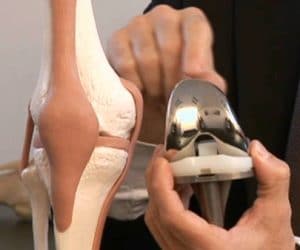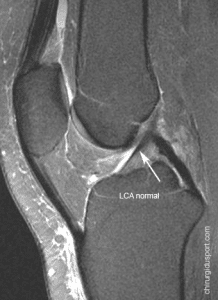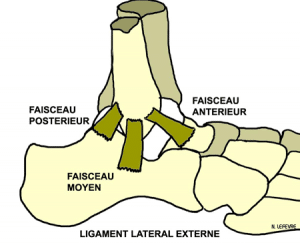Are the joints damaged or maintained by the sport? With a prosthetic hip or knee, can you return to sport or must you be careful? The answers are to be modulated. Boards must be customized.
In the joints, the bone surface is covered with cartilage. This precious pearlescent material exhibits exceptional mechanical properties. They allow to withstand large compression and shear forces while ensuring the smooth rolling and sliding bone pieces.
Osteoarthritis is the wearing away of cartilage.
When the constraints cartilage exceed its capacity, it insidiously erodes. Unlike bone, it does not heal. Rather, studies show it would take 400 years for it to reconstruct! To reduce the risk of osteoarthritis and its accompanying pain and stiffness, avoid certain sports practices harmful to the cartilage. Others, however, prove safe or even beneficial to prevent osteoarthritis or participate in treatment.
The movement is essential to life cartilage.
Cartilage is not passed through blood vessels. Physical activity causes pressure variations on this tissue and for pumping food from vessels passing into the underlying bone. If an animal is immobilized in a position, the point of contact between the two articular surfaces crashed and cartilage eventually die! Rapid movement of bone pieces luster cartilage and maintains its texture. A slow friction planes articular surface. The bike illustrates this contrast. Better to “grind” than “crush large gears.” The deeper layers of cartilage are stiffened by perpendicular to its surface fibers. The pressure guide construction and reinforce its strength. Shear stresses can disrupt the structure.
A bit of running does not aggravate osteoarthritis.
Sports with many obstacles and directions of change can be harmful to the joints. Physical activities are beneficial straight. The bike is ideal. According to a recent large study of fifteen, even running does not aggravate osteoarthritis … provided they do not exceed 40 kilometers per week.
The movement helps the proper functioning of the joint.
Sport maintenance also the function of the joint. stronger muscles, more flexible, more durable and better coordinated ensure a smoother movement. The bone pieces do not knock. The pressure on the cartilage are better distributed. This precious fabric is used much less. A varied workout, diverse, well chosen and adapted to your health behaves like a true rehabilitation … fun too!Cycling, swimming and water aerobics are particularly indicated in osteoarthritis.
Sometimes sport cartilage wears!
This is the case of intensive practices with changes in direction. Marathon runners and high-level cyclists do not have more osteoarthritis than sedentary. Gestures too large amplitudes cause erosion of cartilage. The ball striking promotes wear hip footballer. The hypersouplesse natural dancer abyss joints. After a sprain, the relaxation of the ligaments is responsible for micromovements anarchic bone parts that degrade cartilage. Sport increases the risk of osteoarthritis in the event of localized pressure. This is what happens when he misses a meniscus fragment or when the weight distribution is disturbed by shaped legs parentheses () or X.
SPORT HELPS ARTHRITIS
- If you practice a discipline intensively with management changes.
- If you have any sequelae of sprains or meniscal tears.If your flexibility is excessive (hypermobility).
- If your joints are abnormally shaped
- If you are very overweight
SPORTS PROMOTING ARTHROSIS
- Football, rugby.
- The basketball, handball.
- Tennis, squash.
- Volleyball, badminton.
- Combat sports
- Le trekking.
SPORT FIGHTING OSTEOARTHRITIS
- If practiced in moderation and in a diversified manner.
- If done without changing direction.
- If done without support body weight in obesity.
- If each of trauma is well cared for.
THE WRESTLING SPORTS AGAINST ARTHRITIS
- Swimming, water aerobics.
- Cycling, rowing
- Walking
- The cardio on machines
- The maintenance gymnastics and flexibility.
- Strength training good conduct.
The prostheses used to return to sport!
Your osteoarthritis of the knee or hip becomes painful and embarrassing in everyday life and especially during your sport. The medication, injections, injections of viscous and physical therapy are not enough to relieve you. You decide to ask you a particular prosthesis to revive the sports you care about heart! It’s just a motivation! Your surgeon will help you tailor the response to your case. Walking, swimming, water aerobics, cardio indoors, road cycling and golf are not only allowed but also recommended. They maintain the strength, flexibility and coordination of the muscles around the joint made. Some activities with risk of falling can be reversed if you know the technique well and if you stay cautious. This is the case of skiing, horseback riding and mountain biking.
With a prosthesis, do some sports.
Tennis requires quick races and abrupt changes of direction. That promotes wear of the prosthesis. It is therefore to advise use of playing doubles to limit joint stress. But, it is often possible to continue reasonably simple. Other disciplines are strongly discouraged. If a small occasional jogging or hiking on flat terrain is often possible, distance running and trekking are cons-indicated. The receipt of each stride and downhill on uneven ground are responsible for aggressive impact on the prosthesis. Football, rugby, handball, basketball are contact sports and pivots. Trauma and joint friction combine to destabilize and use the prosthesis. These disciplines will also be abandoned.
Doctor Nicolas LEFEVRE, Doctor Serge HERMAN, Doctor Yoann BOHU. – 13 février 2012.



